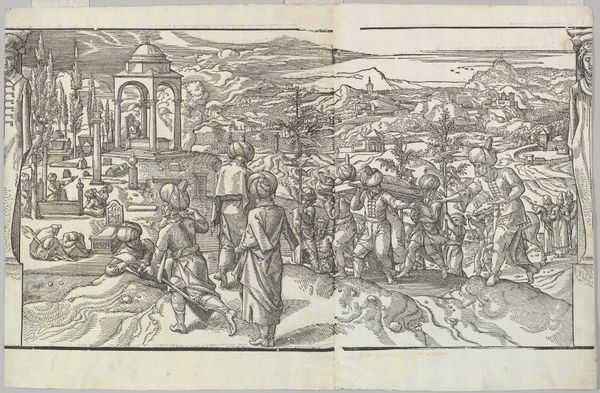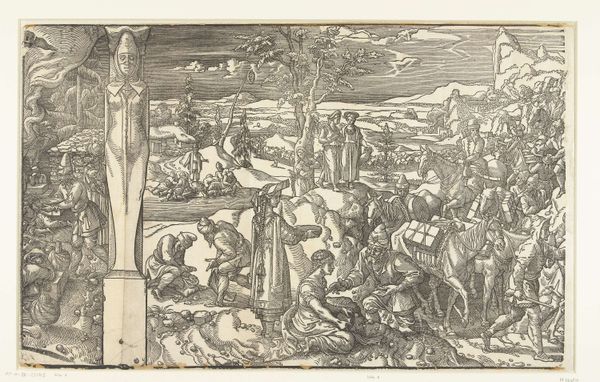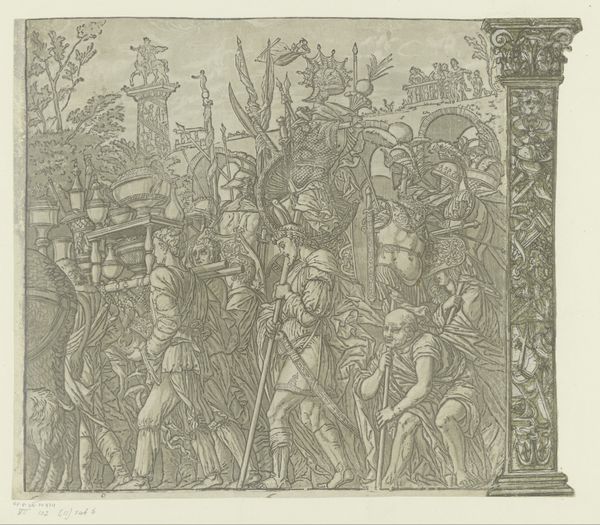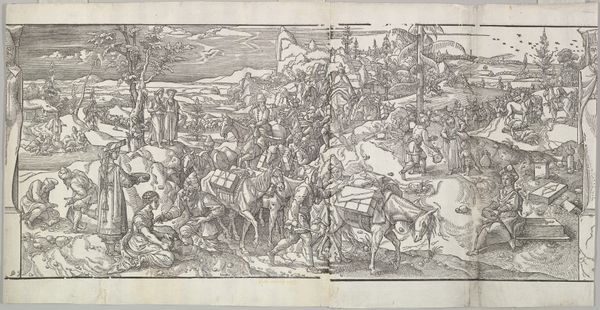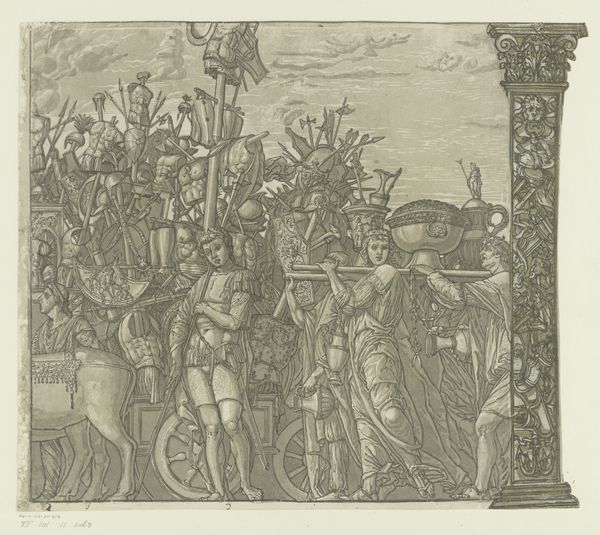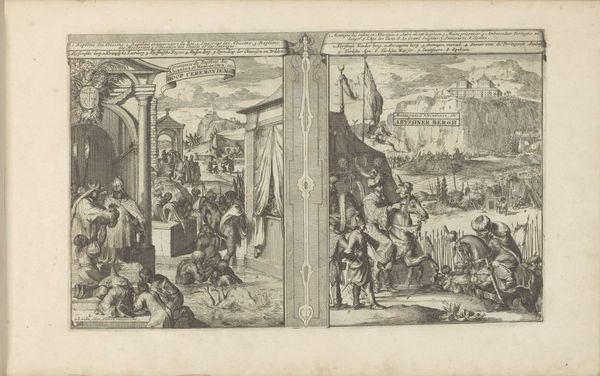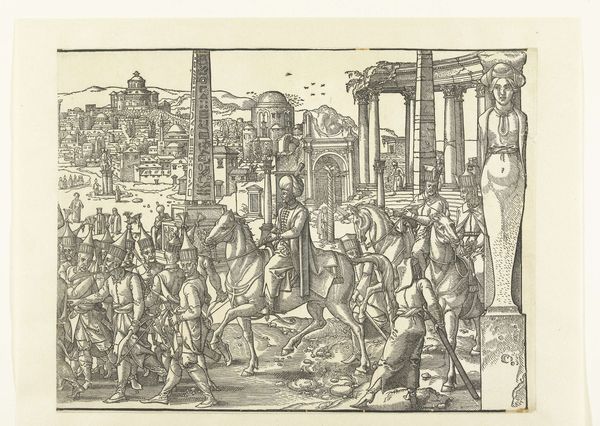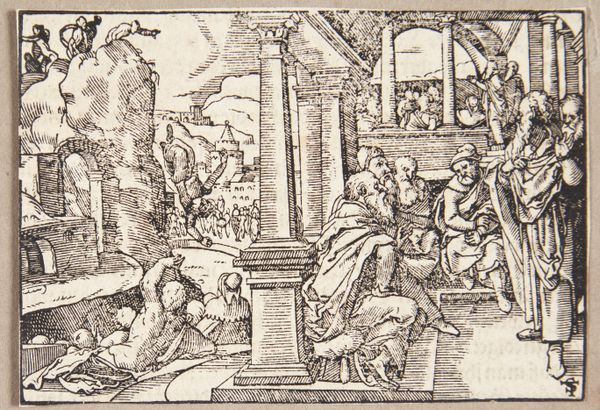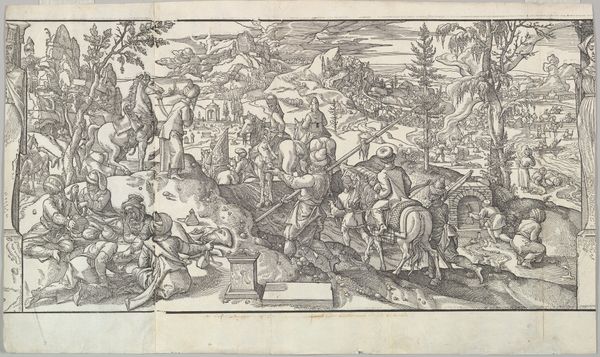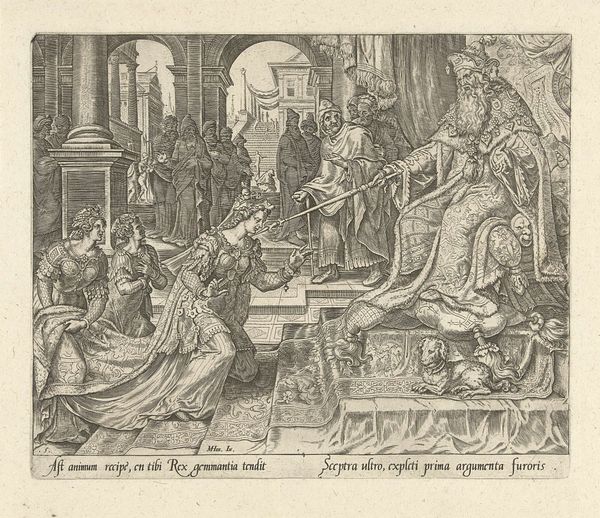
drawing, ink, engraving
#
drawing
#
landscape
#
figuration
#
11_renaissance
#
ink
#
line
#
genre-painting
#
history-painting
#
northern-renaissance
#
engraving
Dimensions: height 294 mm, width 470 mm
Copyright: Rijks Museum: Open Domain
Editor: Here we have Pieter Coecke van Aelst’s "Feest van de nieuwe maan en begrafenis," created around 1553, a drawing employing ink and engraving. It has such a bustling quality to it, even with the funereal theme, there’s so much activity and detail. What can you tell me about this piece? Curator: Indeed. This engraving is particularly interesting for what it reveals about the European understanding, or rather, the European imagining, of Ottoman customs in the mid-16th century. Coecke van Aelst never actually travelled to the Ottoman Empire, but he relied on accounts and sketches by others. Notice the somewhat staged presentation of the scene? Editor: I see what you mean. It almost feels like a tableau vivant, arranged for a European audience. Is that reflected in the composition somehow? Curator: Precisely. The prominent figures, their clothing, the architecture - all carefully presented, contributing to a narrative intended to exoticize the ‘other.’ It’s crucial to remember this piece functions as a form of visual propaganda, solidifying European identity in contrast to the perceived exoticism of the East. How does knowing this impact your initial reading of the piece? Editor: It definitely shifts my perspective. What I initially perceived as mere depiction becomes imbued with political intention. It's like a constructed reality meant to influence European views. Curator: Exactly. Consider how prints like this circulated widely. Their visual language, combined with contemporary socio-political attitudes, perpetuated very specific narratives. Thinking about who saw these images and where they were displayed changes how we interpret the work. Editor: I hadn’t considered the intended audience's role so explicitly before. It changes my view, realizing it is less a window and more a mirror reflecting European perspectives. Thank you. Curator: And thinking critically about those reflections allows us a more nuanced understanding of the power dynamics embedded within the art.
Comments
No comments
Be the first to comment and join the conversation on the ultimate creative platform.
